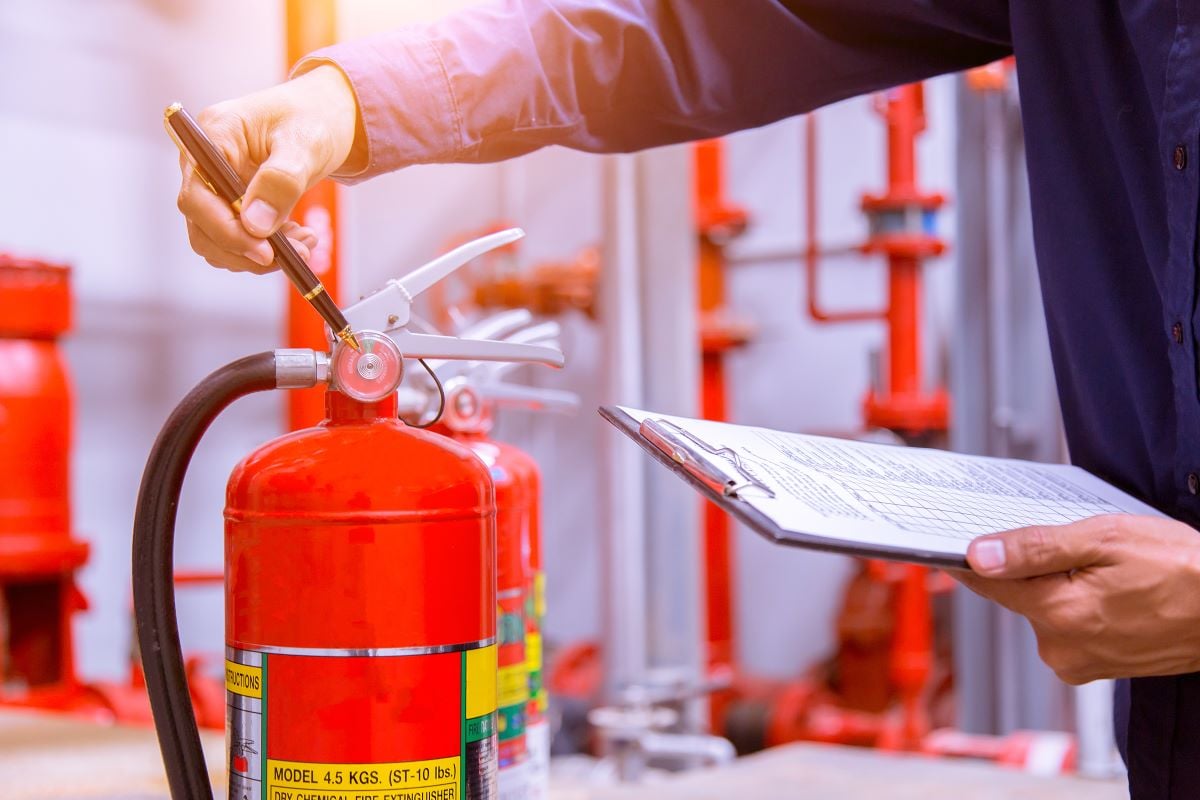
Having the right tool at your disposal can make the difference between containment and catastrophe in a fire emergency. Fire extinguishers are the frontline defenders against various classes of fires, and understanding the different types is crucial for effective firefighting. This blog post serves as a guide, breaking down the key types of fire extinguishers and their applications.
- Water-Based Fire Extinguishers (Class A)
Suitable for: Class A Fires (Ordinary Combustibles - wood, paper, cloth).
How they work: Water-based fire extinguishers utilize water to cool and extinguish the flames. They are effective against fires fueled by ordinary combustibles, leaving behind only a small amount of residual water.
Applications: Ideal for homes, offices, and environments where ordinary combustibles are common. However, they should not be used on electrical or flammable liquid fires.
- Foam Fire Extinguishers (Class A and B)
Suitable for: Class A Fires (Ordinary Combustibles) and Class B Fires (Flammable Liquids and Gases).
How they work: Foam extinguishers form a blanket over the fire, smothering it and preventing re-ignition. They are effective for liquid fires by creating a barrier between the fuel and the oxygen.
Applications: Commonly used in places where flammable liquids are present, such as laboratories, garages, and industrial settings. They are not suitable for electrical fires.
- Dry Chemical Fire Extinguishers (Class A, B, C)
Suitable for: Class A Fires (Ordinary Combustibles), Class B Fires (Flammable Liquids and Gases), and Class C Fires (Electrical Fires).
How they work: Dry chemical extinguishers use a fine powder to interrupt the chemical reaction of the fire. They are versatile and effective across multiple fire classes.
Applications: Ideal for environments with mixed fire hazards, including workshops, garages, and industrial settings. However, the residue left by the dry chemical can be messy and may impair vision, so caution is advised in confined spaces. They are suitable for electrical fires.
- CO2 Fire Extinguishers (Class B and C)
Suitable for: Class B Fires (Flammable Liquids and Gases) and Class C Fires (Electrical Fires).
How they work: CO2 extinguishers displace oxygen, suffocating the fire. They leave no residue, making them suitable for use on sensitive electronic equipment.
Applications: Ideal for offices, server rooms, and areas with electrical equipment. They are not suitable for Class A fires involving ordinary combustibles. Use with caution in small areas.
- Wet Chemical Fire Extinguishers (Class K)
Suitable for: Class K Fires (Kitchen Fires - Cooking Oils and Fats).
How they work: Wet chemical extinguishers create a cooling effect and form a barrier on the surface of the cooking oil or fat, preventing re-ignition.
Applications: Specifically designed for kitchen environments, such as commercial kitchens in restaurants. They are effective against fires involving cooking oils and fats.
- Clean Agent Fire Extinguishers (Class B and C)
Suitable for: Class B Fires (Flammable Liquids and Gases) and Class C Fires (Electrical Fires).
How they work: Clean agent extinguishers use gases like halotron to interrupt the chemical reaction of the fire without leaving residue.
Applications: Suitable for protecting valuable electronic equipment and other sensitive materials in offices, data centers, and laboratories. Some are designed for Class A fires, depending on the agent & size of the extinguisher.
- Water Mist Fire Extinguishers (Class A and C)
Suitable for: Class A Fires (Ordinary Combustibles) and Class C Fires (Electrical Fires).
How they work: Water mist extinguishers use microscopic water droplets to cool the fire and displace oxygen. They are safe for use on electrical fires.
Applications: They were designed for MRI rooms, But are versatile suitable for various other environments , including offices, homes, and areas with sensitive electronic equipment. They may not be as effective as other types on Class B fires.
- Dry Powder Fire Extinguishers (Class D)
Suitable for: Class D Fires (Flammable Metal)
How they work: Dry powder extinguishers use a dry powder to cover burning metal forming a crust excluding air and dissipating heat of the fire. They are only designed for Class D fires.
Applications: Ideal for environments with flammable metals, including machine shops and other industrial settings.
Choosing the Right Extinguisher: Consider Your Environment
Selecting the right type of fire extinguisher involves considering the specific fire risks in your environment. Conducting a thorough fire risk assessment with a certified Koorsen Fire & Security professional can help identify potential hazards and determine the most suitable types of extinguishers for your setting.
Equipping Yourself with Knowledge
In the realm of fire safety, knowledge is the greatest tool. Understanding the types of fire extinguishers empowers individuals to respond effectively to different fire scenarios. Whether at home, in the office, or in an industrial setting, having the right extinguisher on hand can be a lifesaver!


